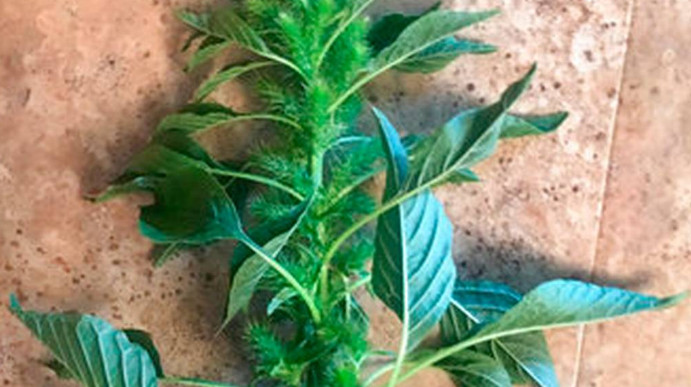A super weed that can devastate corn and soybean crops has now been found in five North Dakota counties, but a university expert says there is still hope for preventing a widespread infestation of Palmer amaranth in the state.
The aggressive pigweed species can grow as tall as 7 feet and produce hundreds of thousands of seeds. It’s strong enough to stop combines and resist many herbicides.
It’s native to the desert regions of the southwestern U.S. and northern Mexico, but it has slowly spread to southeastern and Midwestern states and in recent years has moved into South Dakota, Minnesota and Iowa.
It was first confirmed in soybeans in southeastern North Dakota’s McIntosh County in August, and it now has been confirmed either by extension specialists or through laboratory analysis in Benson, Dickey, Foster and Richland counties, in soybeans, livestock feed and in the wild.
The infestations have been small, with officials in most cases pulling the plants by hand, according to Tom Peters, sugar beet agronomist with the North Dakota State University Extension Service.
“We can manage these small fields of Palmer amaranth,” he said. “If we allow it to become established, I think then it’s going to change the way we grow crops in North Dakota.”
A heavy Palmer amaranth infestation can cut soybean yields by as much as 79 percent and corn yields by up to 91 percent, according to research by Purdue University. The threat from the weed is so great that NDSU Weed Science officials named it the “weed of the year” in both 2014 and 2015, even though it hadn’t yet been found in the state.
Officials determined the weeds found in the past few months had a variety of likely sources — migratory birds, farm equipment, a railroad car and livestock feed brought in from out of state. All of the plants so far have been found in eastern North Dakota, which borders states where Palmer amaranth also is present.
The weed has not yet been found in Montana, but western North Dakota could still be susceptible, especially with the large amount of out-of-state hay trucked in during the 2017 drought, according to Peters.
Diligence by farmers, other landowners, gardeners and even hunters is key to diminishing the threat, according to Peters. State Agriculture Commissioner Doug Goehring has encouraged farmers to scout fields this harvest, and the state Game and Fish Department has asked hunters to keep an eye out.
“I think there’s great hope,” Peters said. “I think we have to continue what we’ve been doing, and that’s be curious, be suspicious. If something looks different on the landscape, ask questions.”
Credit: sacbee.com


